Similar Posts
(Editor’s note. For some time now we’ve wanted to find a way to present the burgeoning iconography which is currently happening in Romania. And so after a bit of searching, this article introducing the new school of iconography was written especially for OAJ by Mother Atanasia (Văetişi) of the Stavropoleos Monastery in Bucharest in collaboration with my own parish priest Fr. Dragos-Andrei Giulea, here at St.Benoit de Nursie parish, Montreal, who also translated the article. )
I. Iconography, a recovered artistic language
It would have been impossible to imagine a public conversation on icons and their veneration a quarter of a century ago in communist Romania. It would have been impossible as well to imagine iconography taught in a public school and the technique of painting icons at the department of Fine Arts. In those days, the interest in icons was a mere private occupation, or of niche. Institutionally, the Romanian Patriarchate had a commission specialised on religious art mostly dealing with the preservation of the national heritage. However, in the last 25 years that have elapsed since the anti-communist revolutions in Eastern Europe, changes have been impressive. Today it is a common gesture to order an icon for your house or to offer an icon as a present. Four of the twelve Orthodox faculties of theology in the country have created departments of sacred art, preparing iconographers and specialists in the preservation of medieval iconography; and many of their graduates have become proficient in painting icons and frescos. In the aftermath of the atheist regime, religious life has revived in all its dimensions: art, liturgy, parish life and monastic communities. There are new parish churches, new monasteries, new canonized saints as well as new Christian martyrs of the communist persecution receiving a large popular veneration and waiting to be canonized. In this context, the icon has become a common presence in homes and offices.
The most remarkable aspect of this revival is that the abundant iconographic demand and the high number of skilled iconographers gave rise to a competitive ambiance that led to an obvious advance in the quality of iconography and, subsequently, to a new iconographic movement. As with any profession, the new iconographers and church painters demonstrate an uneven value; it is not enough to learn the technique and follow the Byzantine herminia (the painter’s manual) to become a skilled and appreciated iconographer. On the one hand, there are painters who reproduce classical compositional and chromatic styles from Manuel Panselinos – the most frequented and most imitated – to Macedonian iconography, to the masterpieces of Mont Athos, to the local Romanian styles (either of the Moldavian monasteries or of the Brancovan (Brâncoveanu) art developed in Walachia in the eighteenth century). On the other hand, there are those artists who strive to define their own style and language in what regards either the manner of drawing, or of choosing the chromatic palette, or of re-imagining the internal composition of icons and iconographic programs. Some of them have found their own style and thus have become able to push further iconography as an artistic domain, at least in this Orthodox country.
Our interest focuses on these latter artists who have reached an advanced aptitude of mastering the painting of icons and frescos. Socially, they are also the most visible category, knowing how to promote their creation, how to set up events and integrate their art in the larger cultural and artistic phenomenon. Their personalities are complex: in addition to working in the studio or on the scaffold, they organize symposia, open exhibitions and workshops, invite colleagues from the country and abroad, some of them teach religious art and, generally, they bring iconography to the public attention. One may observe that, over the past five to ten years, the phenomenon has become more alive and has configured a group of iconographers and church painters who are not only talented artists but also curators, theorists and project managers. Furthermore, one of the most significant aspects is that a few artistic values have been gradually assumed by the most valuable iconographers:
1. A thorough education in classical art. Well educated in classical painting, iconographers belonging to the old generation (now in their 50s and 60s) as well as a few of the new generation (in their 30s and 40s) have a substantial experience in restoring ancient religious monuments (icons and frescos). In so doing they acquired a fine knowledge of composition and a particular chromatic sensibility as they later demonstrated by creating extensive iconographic programs. The new generation of painters (in their 30s and 40s) has not been formed by direct apprenticeship with a master. Most of them studied classical art at the Faculty of Fine Arts in order to gain a solid formation in such essential techniques as drawing, composition, anatomy as well as their visual culture. Additionally, they studied Byzantine art albums and collections, travelled throughout the Orthodox world to study mural assemblies and, equally important for their progress, were guided by their artistic talent, intuition and spiritual life. Now they are accomplished masters of traditional iconographic techniques, they choose and prepare materials very diligently and refrain from using certain popular ingredients today, like acrylic and chemical paints, which induce a cheap sparkling effect to the image. Chromatic splendour does not have to be confounded with fleshy TV colours. We have to mention that, because of them, the difficult technique of the traditional fresco has survived in modern Romania, most likely one of the fewest places in the world; and, moreover, has become great art.
2. A personal spiritual life. All of them assume, with the Orthodox tradition, that a spiritual dimension is a necessary ingredient to painting an icon. Painting an icon is not a mere artistic activity but a facet of the larger spiritual growth, both personal and part of the community in which the iconographer lives. Painting an icon, therefore, becomes a way of expressing their creativity, a spiritual search in a direct continuity with their ancestral Orthodox legacy and a way of life to which they dedicate themselves entirely. Thus, they strive to understand the icon in a theological manner, as a sacred image, and to address it from a spiritual angle. There are a few cases in which the artists even chose the monastic life; and icon painting became their main obedience in the monastery.
3. They do not imitate but innovate within the canons of tradition. Probably the most interesting value gradually assumed by the iconographers of the new generation is that they cherish artistic originality and freedom of expression. They do not accept to create in a mannerist way and to reproduce the masters of the past while making a concession to a common, popular taste. Paying attention to the smallest technical and theological detail, they strive to avoid not only religious kitsch but also religious clichés. After assimilating the skills, the Byzantine canon, a rich documentation and a general knowledge of the medieval art, some of them have been able to define their own style. And this fact has allowed them to rethink classical iconography and innovate in terms of style, colours and composition as well as to find new themes and become “hagiographers”. All these elements have led them to reach an unprecedented quality of the iconographic act in which they commit themselves to artistic originality within the confines of the Orthodox iconographic tradition. From this perspective, any iconographic scene may be re-imagined in the light of the biblical text and the traditional iconography. As Ioan Popa expounds, “I reread the text of Scripture and then rethink the classical iconography of a feast.” To them, the splendour of colours and shapes has to make transparent the hieratic atmosphere of the spiritual kingdom and guide the eye, mind and soul of the one who contemplates into the mysteries of the invisible world. In order to get this effect, they sometimes reshape human anatomy to filiform silhouettes and undulate human bodies according to the Greek Palaeologan manner or elongate them like the classical Russian masters.
II. Some iconographers and their work
Gregore Popescu. He is the oldest among the Romanian church painters and has the largest artistic oeuvre. Although the younger painters were not his direct apprentices, all of them have been inspired by his free attitude in exploring a certain theme and by his knowledge of composing with originality an icon, a scene or an entire wall. Popescu is innovative in terms of colour, form and composition, being inspired by classical Romanian iconography which he stylizes through thinning, undulating or elongating the anatomic shapes of the human body sometimes in his own way. He also innovates in terms of chromatic style by effecting a warm and picturesque palette inspired by the old popular Romanian art which he knows in depth.
Popescu is also the creator of a new iconographic cycle: in the porch of the new church of Lainici Monastery (south-western Romania) he composed a painted “chronicle of Romanian Hesychasm” in which a central place is dedicated to the history of the Philokalia. This painted narrative includes the Cappadocian Fathers with their Philokalia, St. Nicodemus of Athos with his collection printed in Venice, St. Paisius Velichkovsky and the medieval monastic scriptoria and concludes with the Romanian translation of the famous book in the twelve-volume collection carried out by Fr. Dumitru Stăniloae.
Elena Murariu represents the middle generation. She worked as a fresco specialist who restored different mural assemblies of the fourteenth to eighteenth centuries and subsequently commenced painting her own icons. Murariu painted the iconographic models of the newly canonized Romanian princes by composing a historical narrative with scenes from their lives inspired from the Russian chronicle-type iconography of the sixteenth century. Very prolific, she is able to elaborate a certain topic, for example the martyrdom of the Brancovan Saints, in various media and techniques, from icons following the strict composition of the Byzantine canon to other artistic modalities such as graphics or tempera on wood panel. These remarkable skills allow her to insert within the classical iconographic language some of the techniques and ways of expression proper to other artistic media such as hatching, vibrant strokes and an emphasized dynamism.
Gabriel Toma Chituc. Also primarily educated as a classical painter, Chituc is an original and gifted iconographer with a special artistic expressivity. In the last decade, he has become a prolific iconographer striving to find the mystery of the authentic icon inspired by the Holy Spirit. Influenced by the art of the Russian masters of Novgorod and Moscow, from whom he took over the transparency, grace and delicacy of portraits, he filters all into a personal style of delicate physiognomies, elegant gestures and movements, warm and desaturated colours and refined folds. He is original and very personal either when he rethinks a classical theme like icon of the Nativity or the Annunciation, or when he creates the portrait of a saint or martyr.
Ioan Popa. Although he is only 38, Popa has already painted in the fresco technique two churches in Bucharest and Alba Iulia, the church of a monastery in the Apuseni Mountains as well as baptisteries and small chapels in Southern Italy, Cyprus and Mount Athos. Popa is endowed with a very good knowledge of Byzantine art, its roots and legacy spread throughout the Balkans and Southern Italy. Well documented in art history and gifted also with a researcher’s vocation, he inclines artistically towards a “local style connected to the Byzantine tradition of the One Church”. He is able to compose his mural assemblies adapted either to traditional or experimental architecture and thus to generate unique iconographic programs.
Author of many icons, too, Popa sometimes creates new narrative cycles in the scenes painted in the margin of the icon.
He accomplished a fresco of great originality in the church dedicated to St. John the Baptist in Alba Iulia. The scenes are reduced to essentials, painted on large areas delimitated by inscriptions, fragments of Scripture and liturgical texts. He masters a firm drawing technique which conveys to his mural assemblies a certain monumentality and hieratic atmosphere specific to the primitive art.
Mihai Coman. He teaches church painting techniques at the Faculty of Theology in Bucharest and studied restoration in Romania. However, in what regards his skills of painting icons and frescos, Coman affirms that he “learned the technique on Mount Athos and understood the icon with the professor and painter Georgios Kordis,” whose doctoral student he is in Greece. Coman is indeed indebted to the Athonite and Cretan traditions of the fourteenth and fifteenth centuries preferring elongated figures, delicate and mannerist gestures and clothes of largely draped surfaces. Besides his many icons fashioned with a minimalist refinement, he painted the frescos of the chapel of the Polytechnic University in Bucharest and collaborated with Gabriel Toma Chituc for the church of St. Theodosius Hermitage in Brazi.
Deacon Nicolae Bălan. After his studies in iconography at the Faculty of Theology in the Department of monumental art, he attended the Faculty of Fine Arts in order to improve his drawing and composition techniques. Bălan is a gifted draftsman and he painted the metropolitan chapel from Limours (France) and St. Trinity Church in Alba Iulia. He demonstrates a particular talent in organizing complicated wall surfaces, in a skilful elaboration of mural scenes and in emphasising the main theme around which the entire composition gravitates.
To these iconographers should be added many others, all of special talent and abundant production. We will mention here a few of them for a few particular reasons. First, some have composed new iconographic themes, like Răzvan Gâscă with his St. Maximus the Confessor with scenes from his life, painted to mark the presence of the relics of St. Maximus the Confessor to Iaşi in 2010.
Likewise, Marius Ghinescu for his St. Pachomius at St. Dimitry of Rostov, which represents a moment in the life of Venerable Pachomius of Gledin (1674-1724), a Romanian hermit and bishop who spent his last years at the Pecerska Lavra in Kiev.
Others should be mentioned for the original manner in which they reconceived certain classical themes, for example Daniela Toma Musat, St. M. George.
Finally, we should mention some who are talented artist monks able to innovate within the canon, such as Mother Olga, St. Joachim and Anna, Monk Haralambie, The Venerable Founders of Monastery Vatopedi, and Monk Iacob, Mandylion.
III. An iconographic theme – The Brancovan Martyrs
Prince Constantin Brâncoveanu was beheaded in 1714 by the Ottomans together with his four sons and his counsellor Ianache Văcărescu because they did not renounce their Christian faith. He then became one of the most beloved princes of Romanian history and presently is one of the most venerated saints in the country. The anniversary of 300 years from the martyrdom occasioned a rich and original iconographic production developed either by analogy with established themes of the Byzantine tradition (Beheading of St. John the Baptist) or by integrating classical iconographic themes (Mandylion, Jesus’ Vine, Deisis) and martyrdom scenes as recorded in chronicles and historical writings.
The last example belongs to Sorin Dumitrescu, a talented metaphysical painter of the old generation converted into an inspired and charismatic theoretician of the icon as well as an original iconographer in spite of the smaller number of icons he has realised. While in his early career as an iconographer he filtered Palaeologan tradition in a personal manner, he searches his present sources of inspiration in the times which preceded iconoclastic controversy.
With this we close our short excursion into contemporary Romanian iconography. The diversity of artists, styles, techniques, media and sources of inspiration unveils a fascinating artistic and spiritual phenomenon. It will be worth seeing in which direction Romanian iconography will evolve in the future.

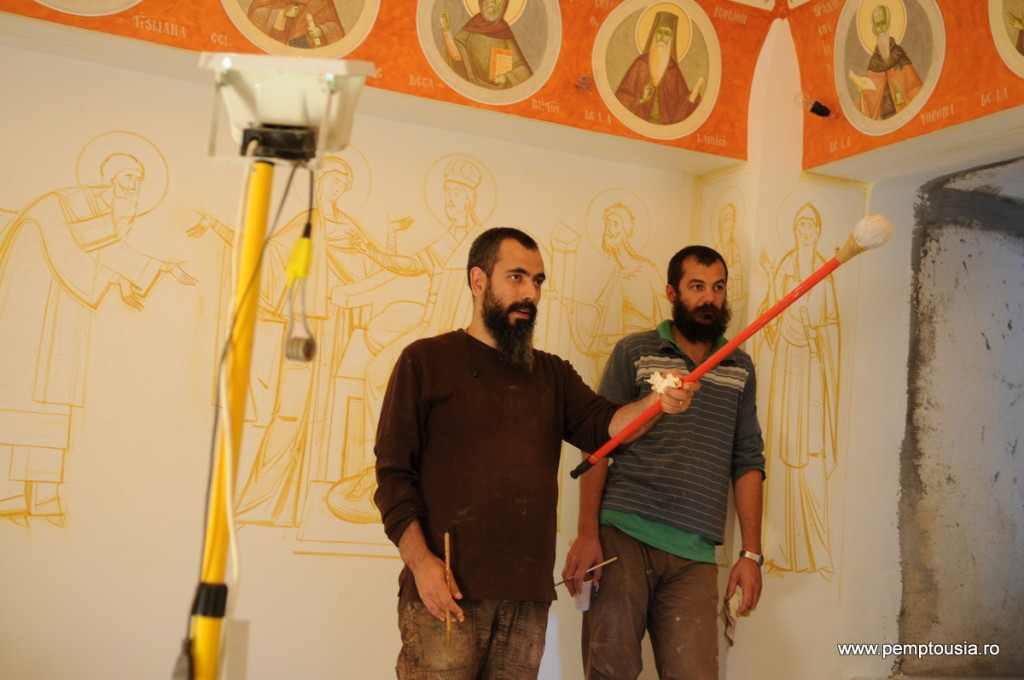
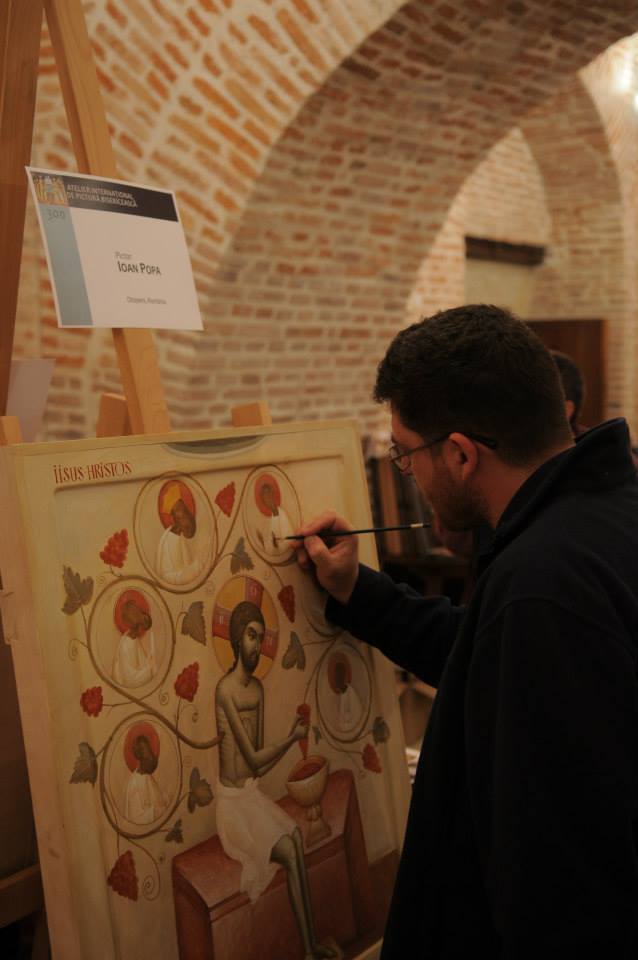
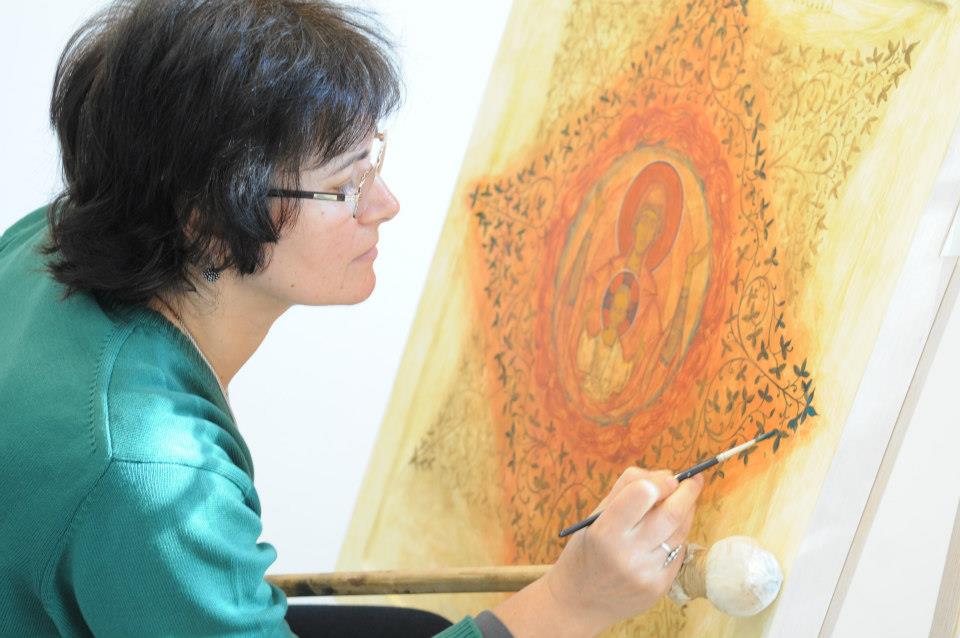
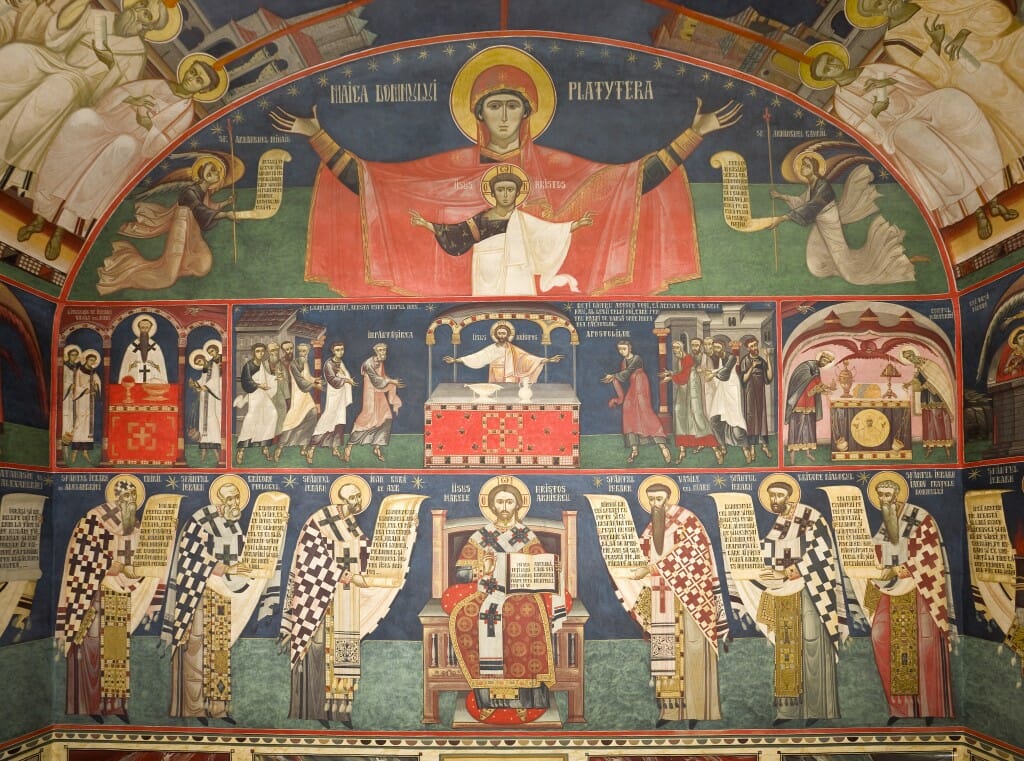
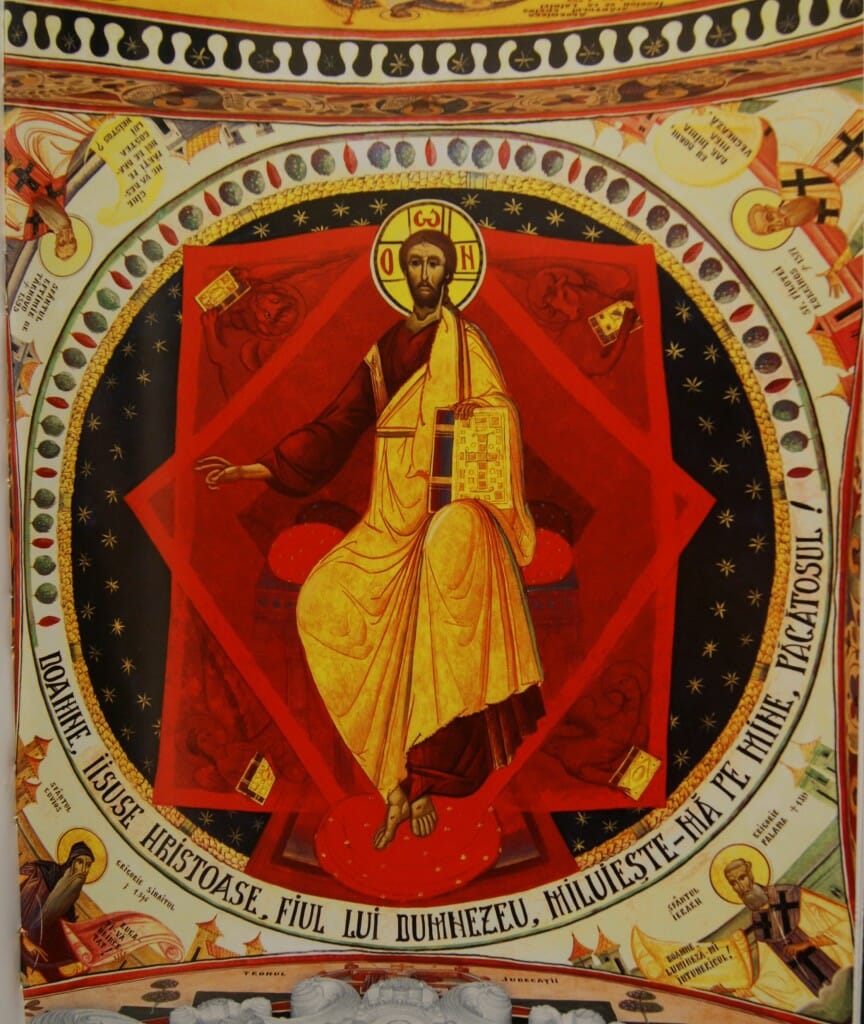
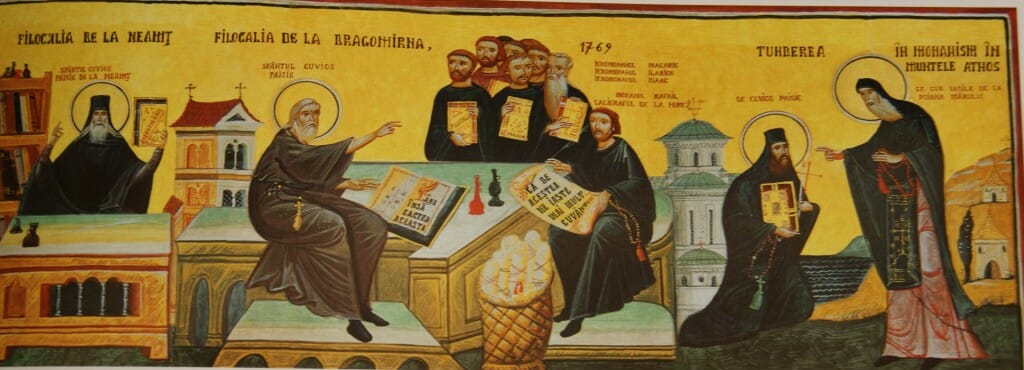
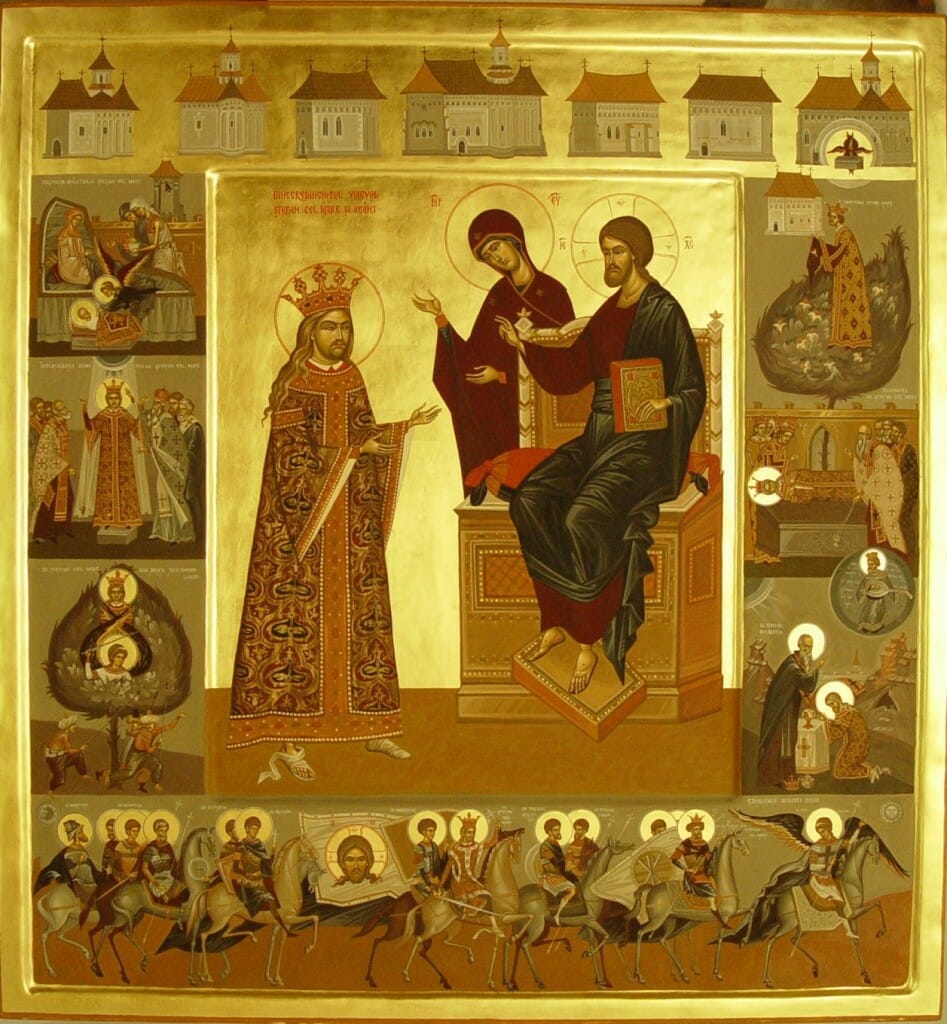
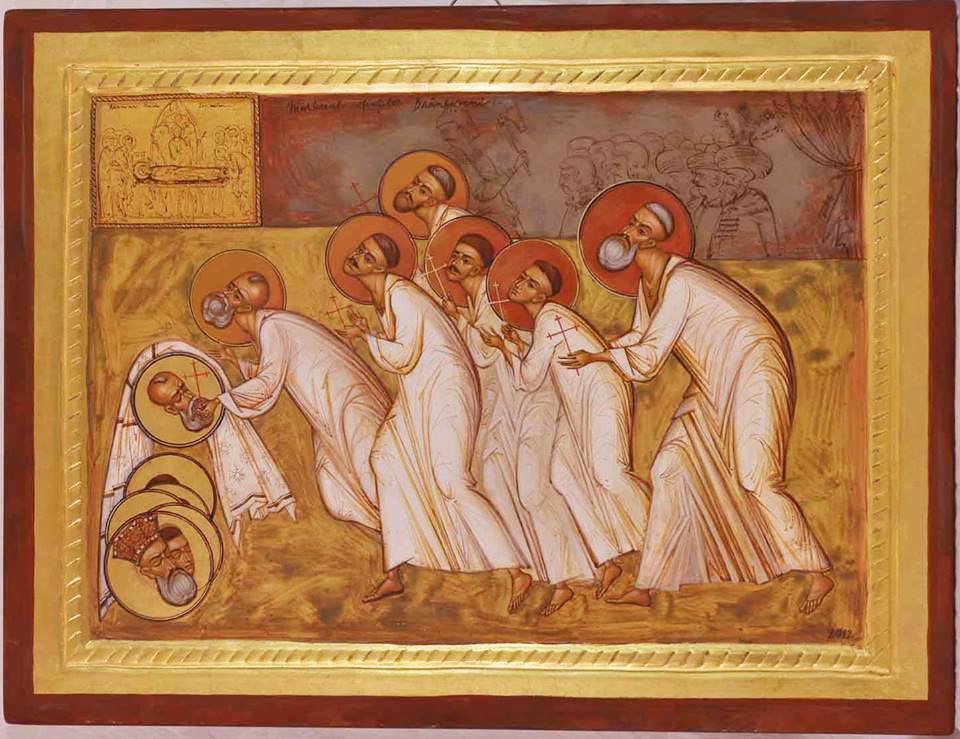
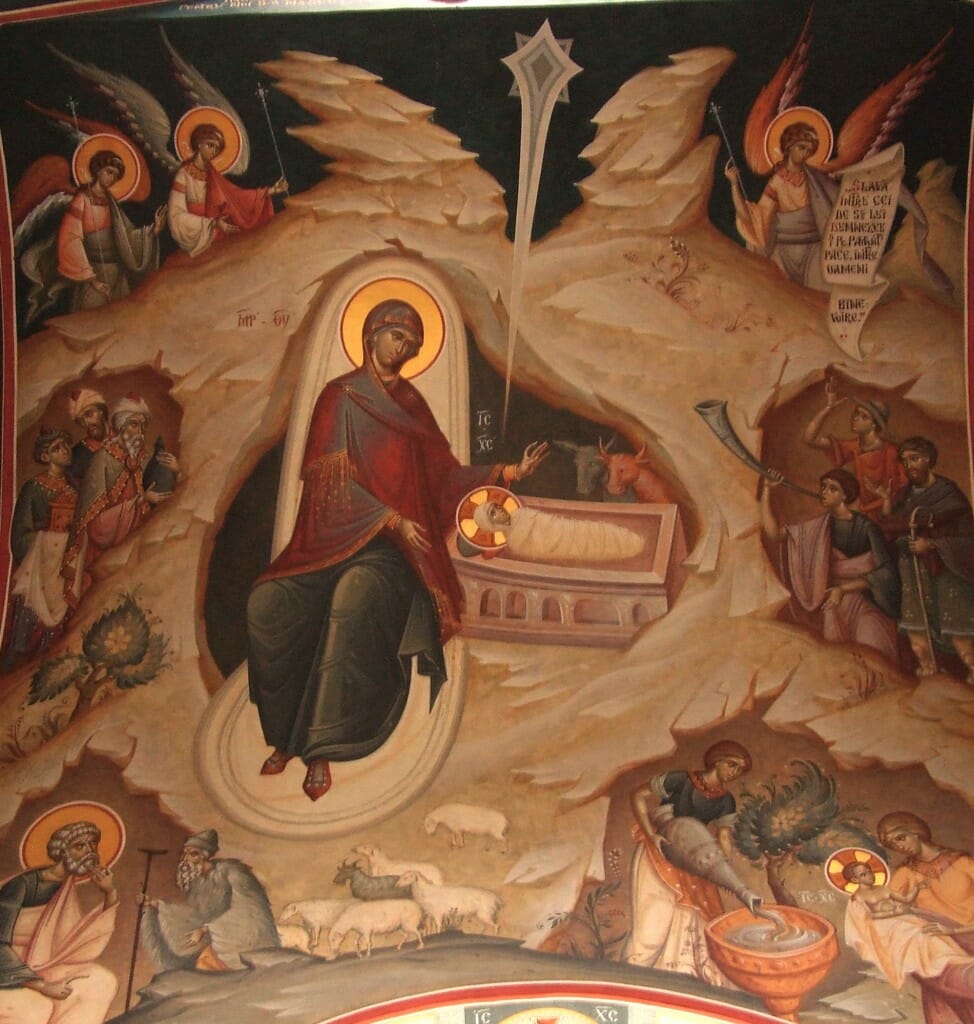
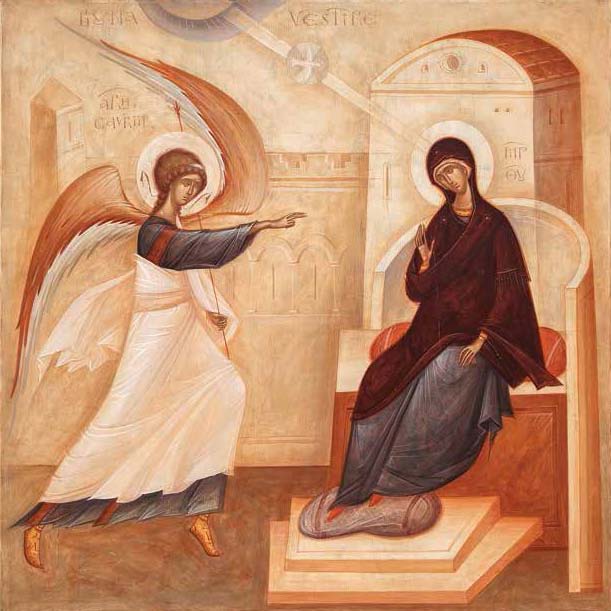
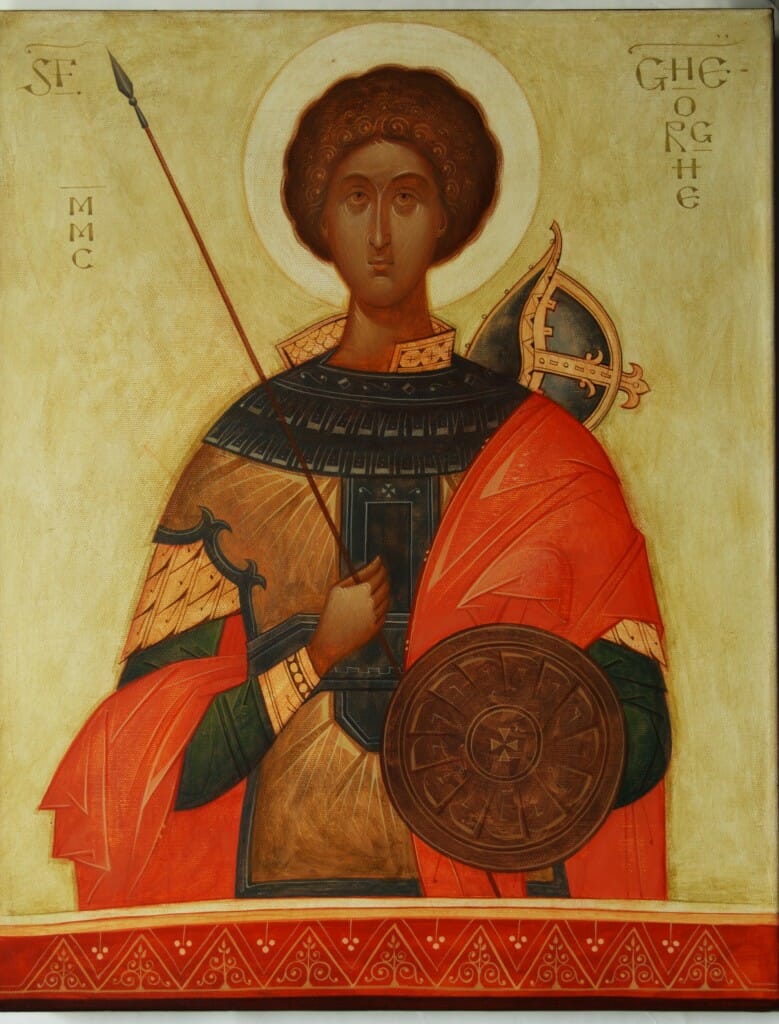
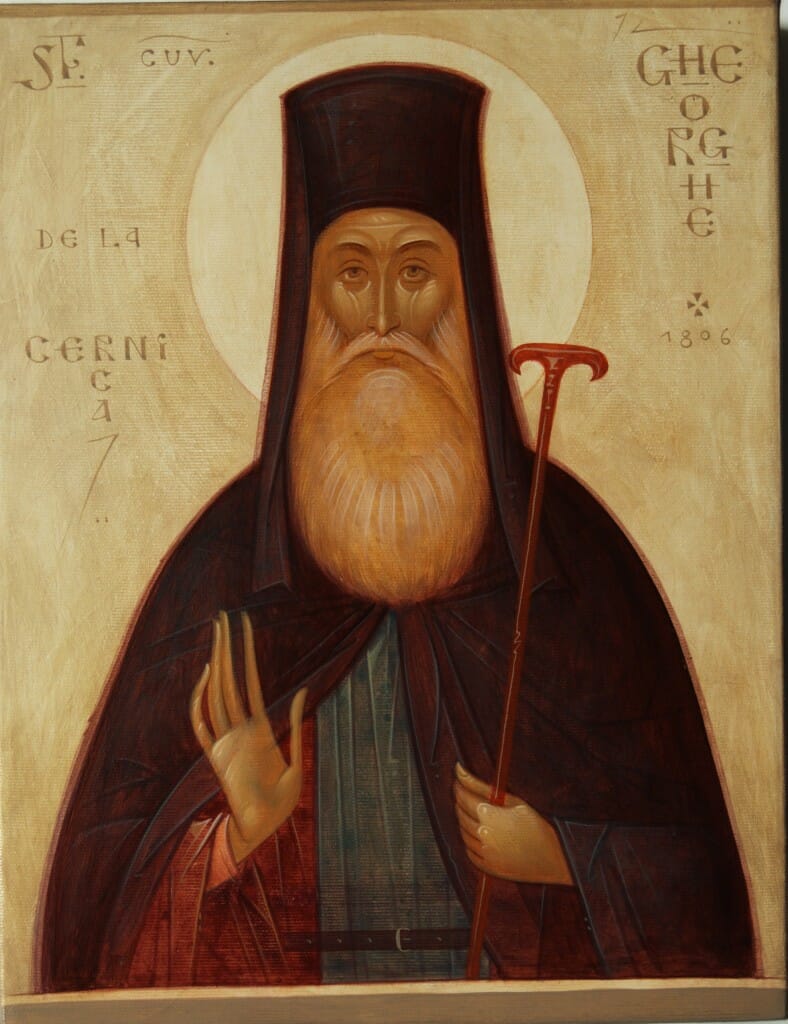
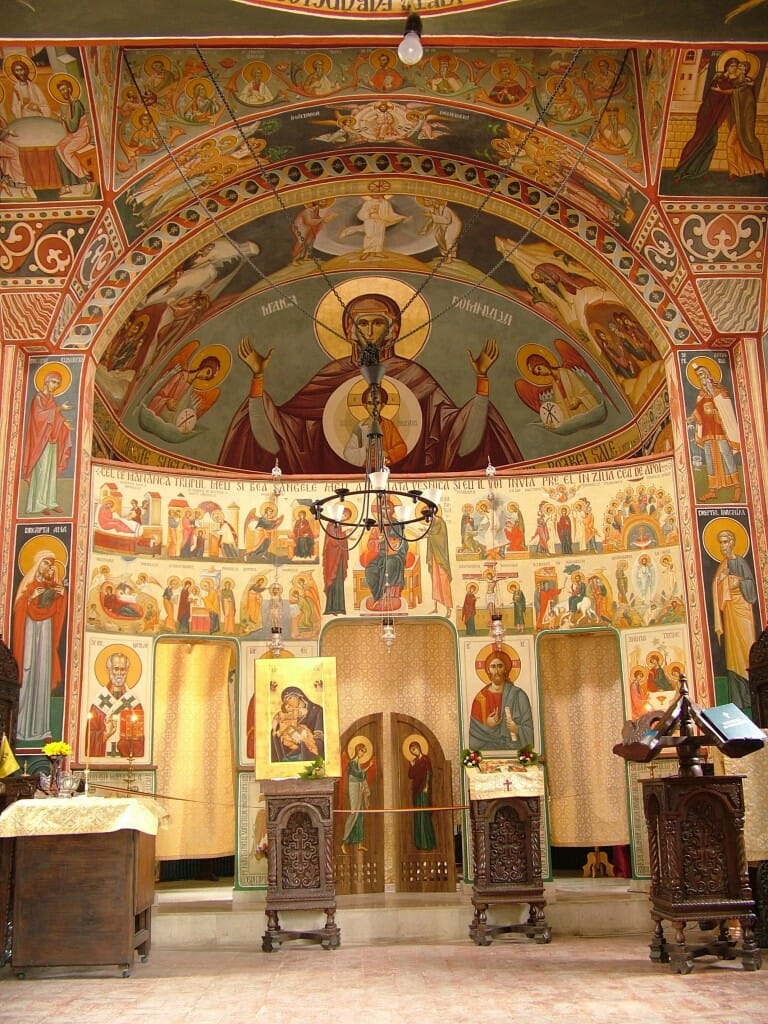
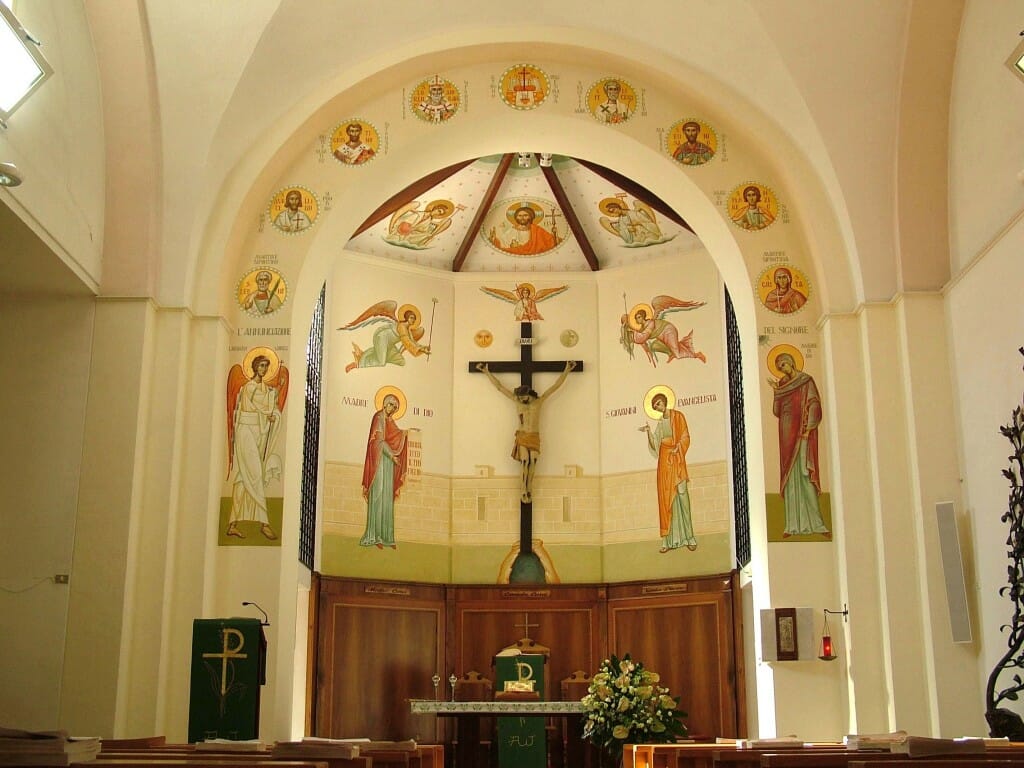
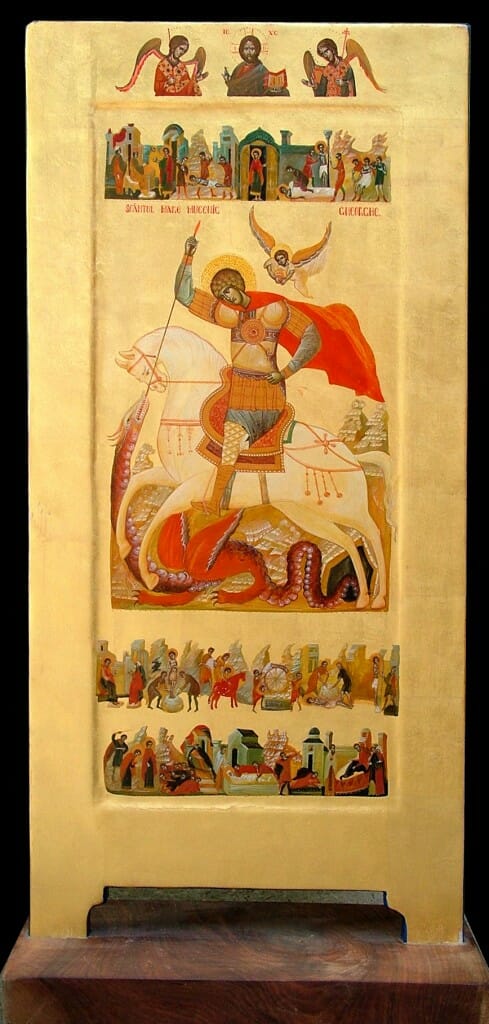
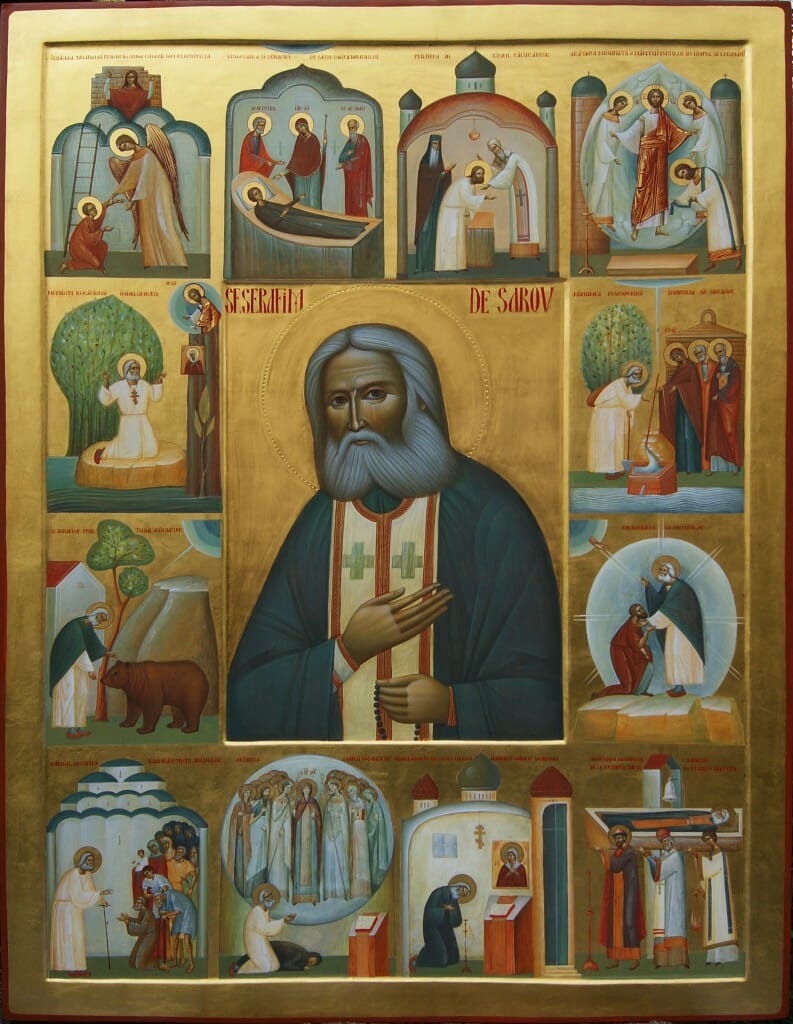

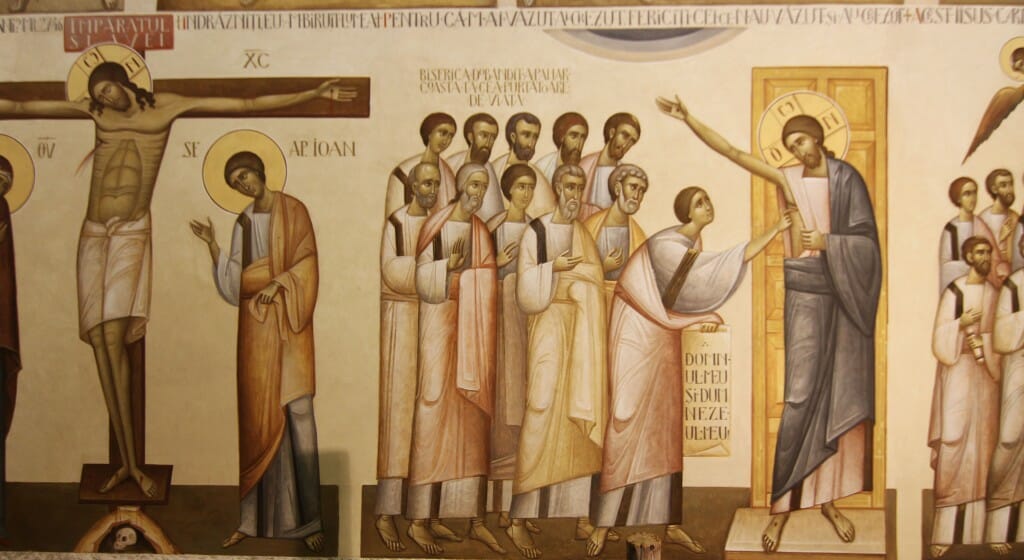
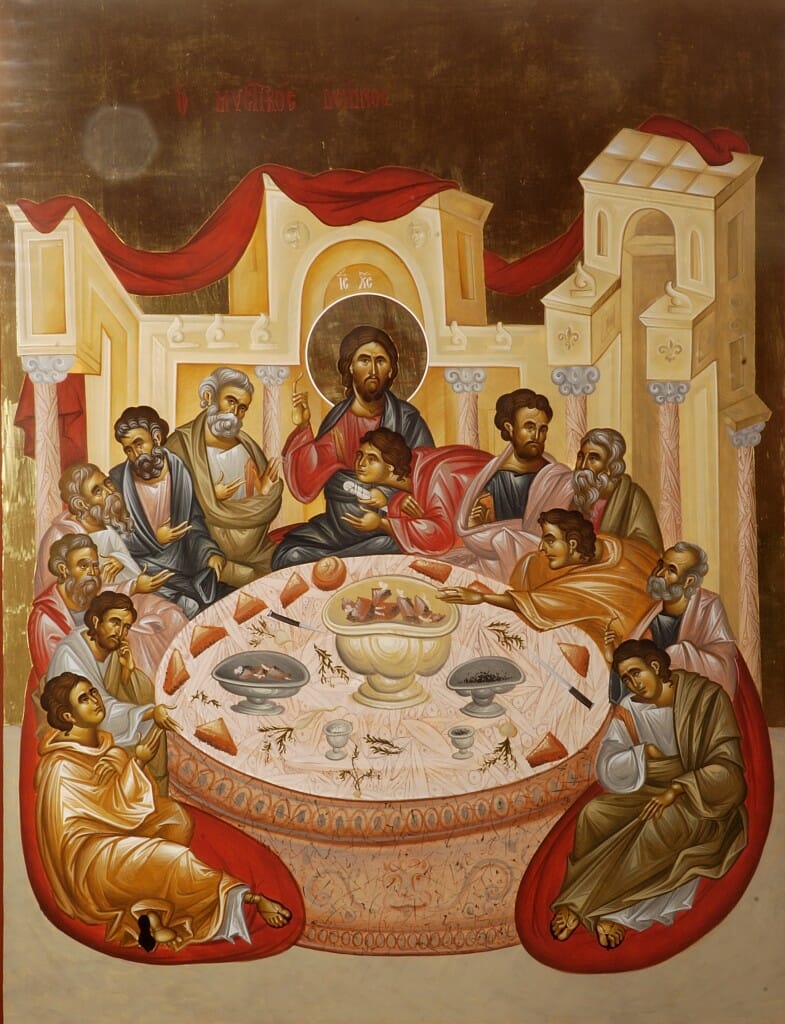
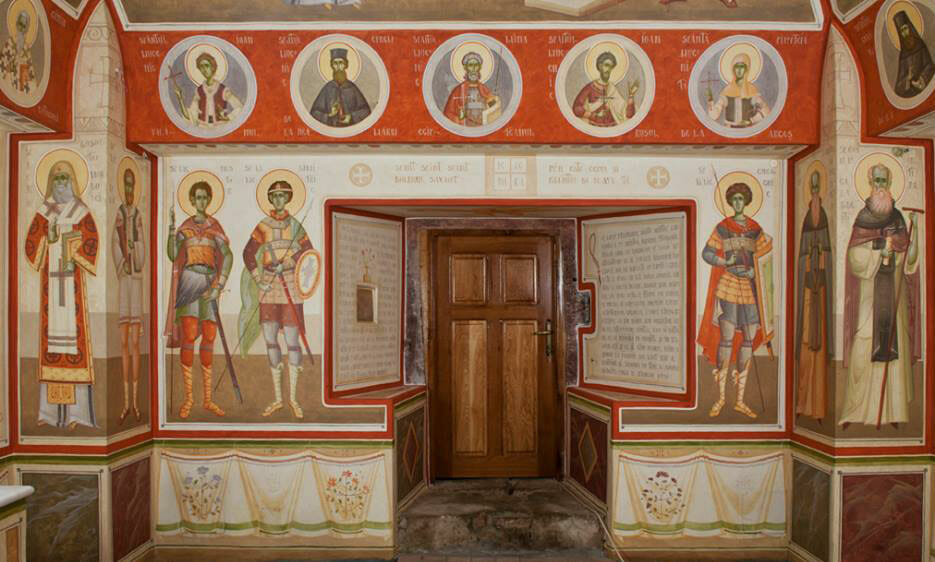
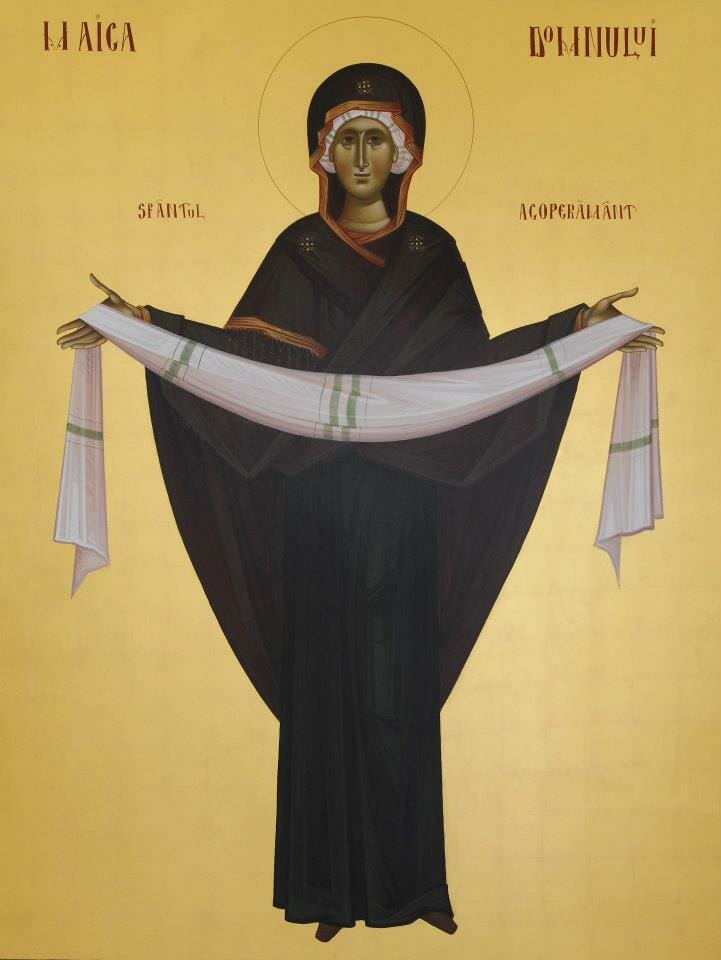
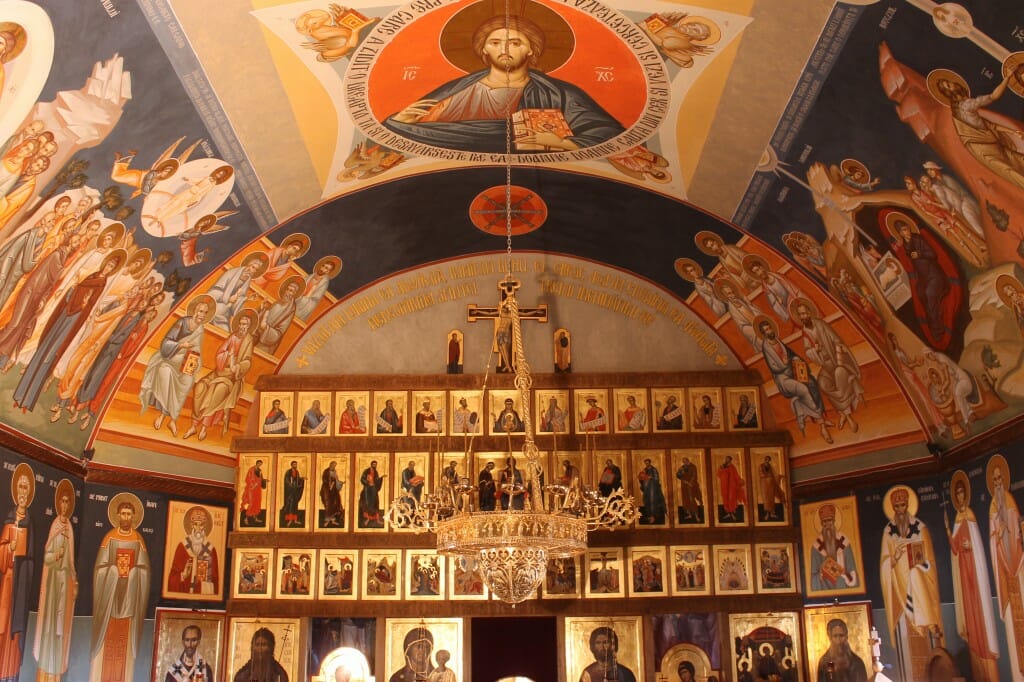
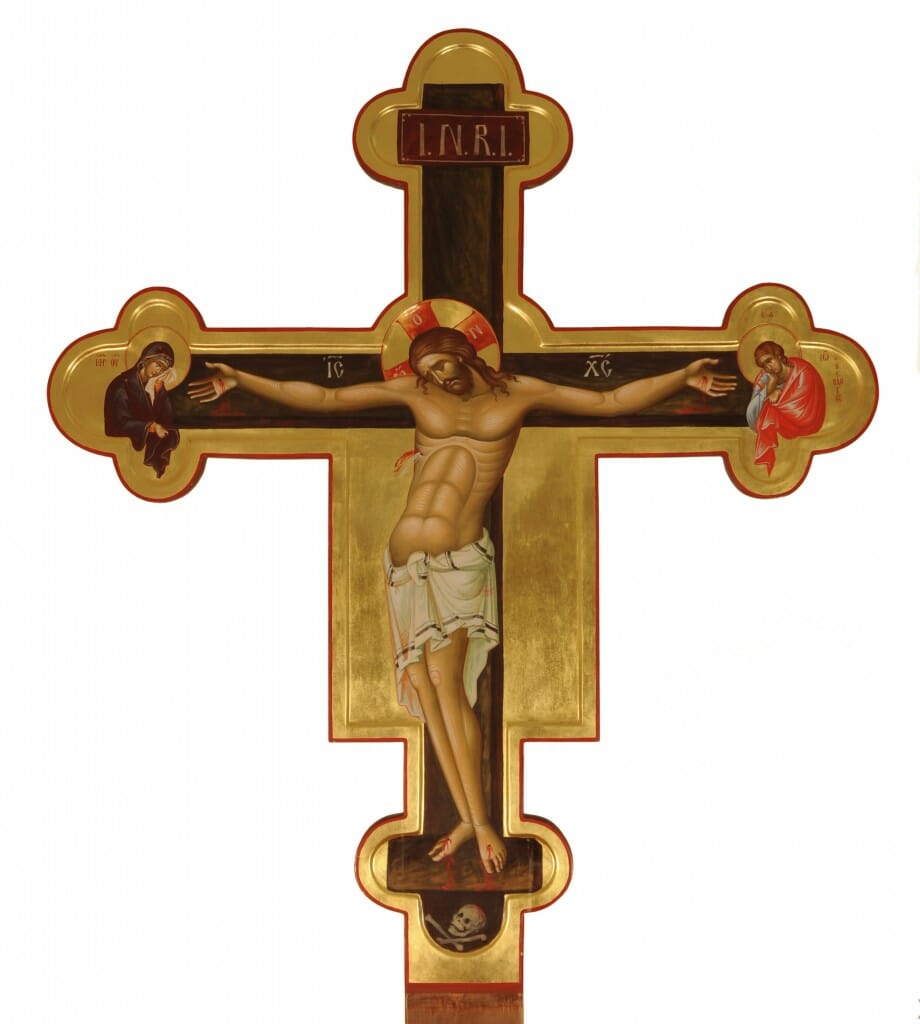
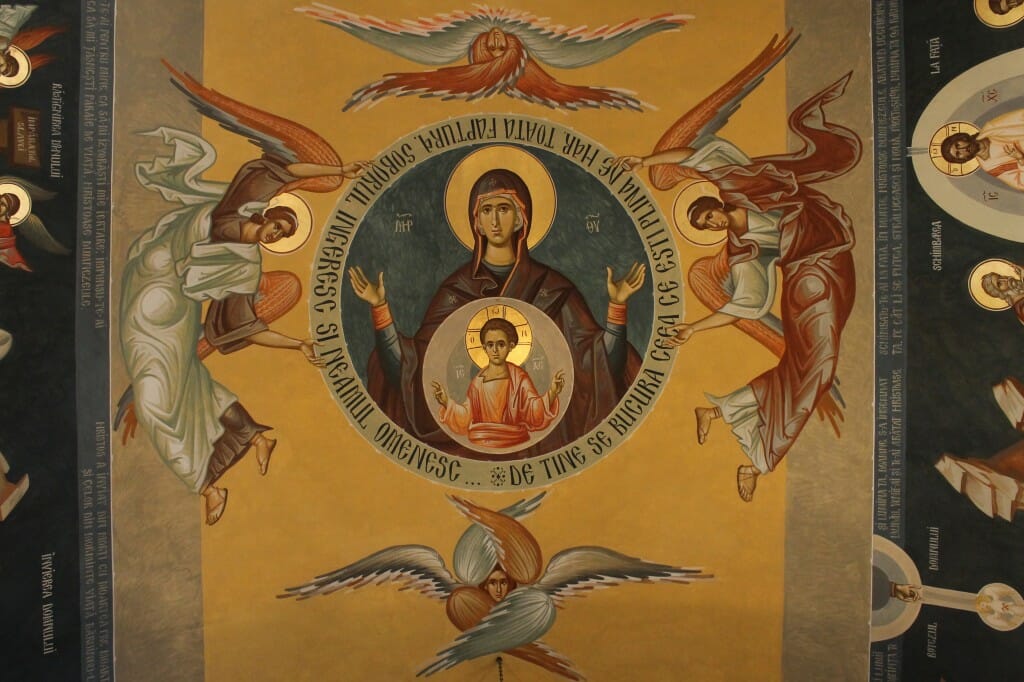
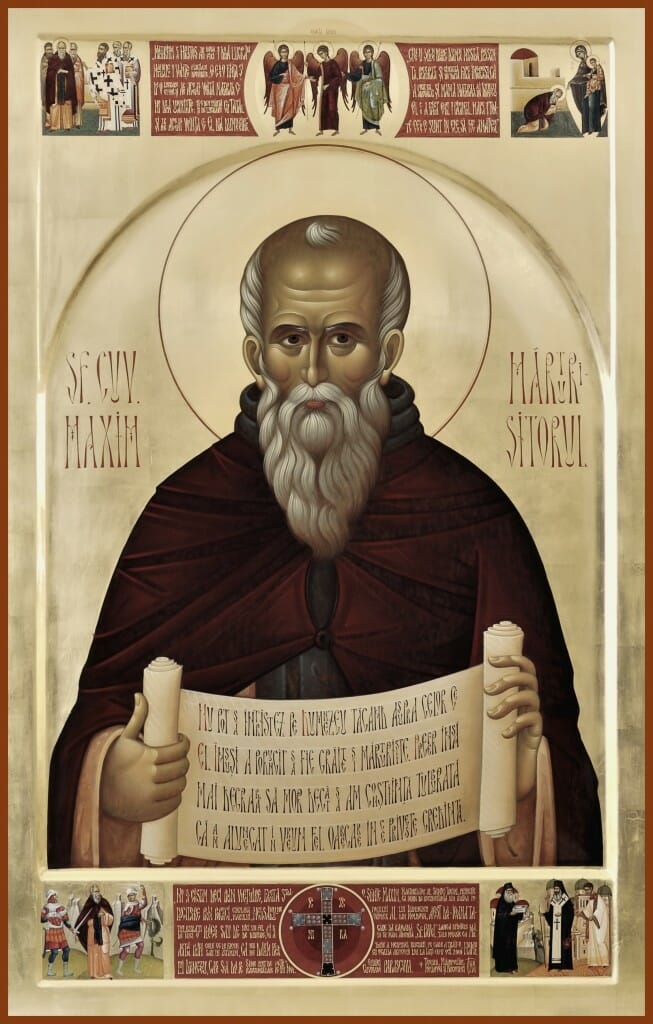
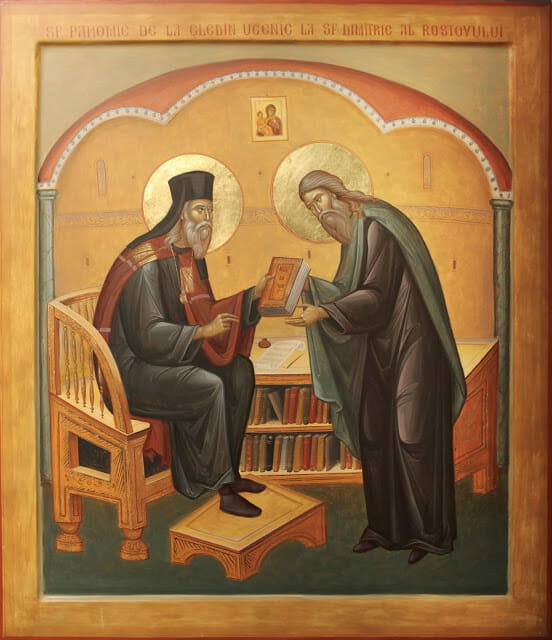
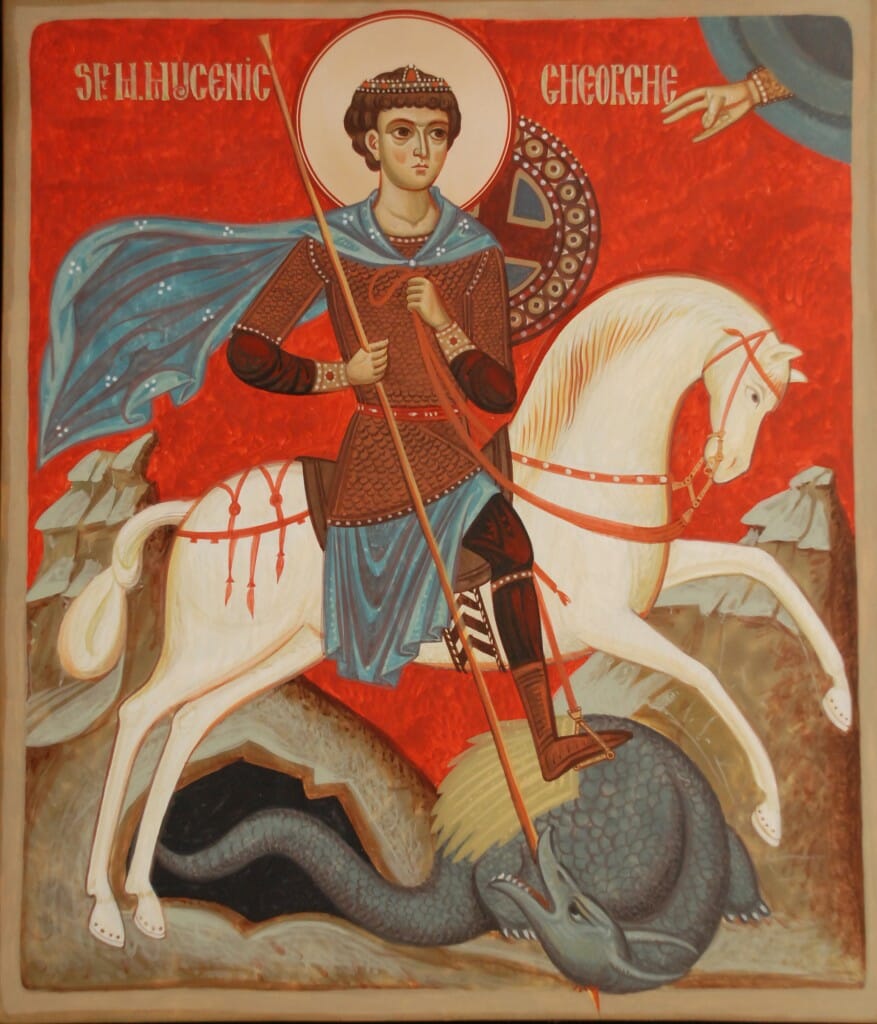
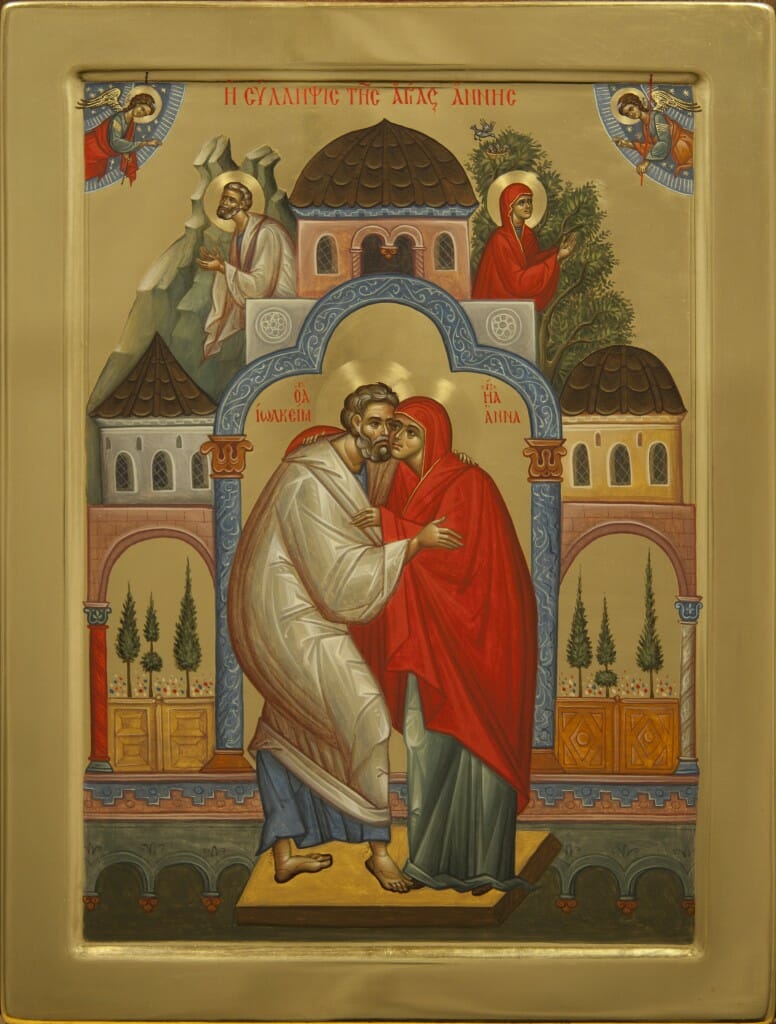
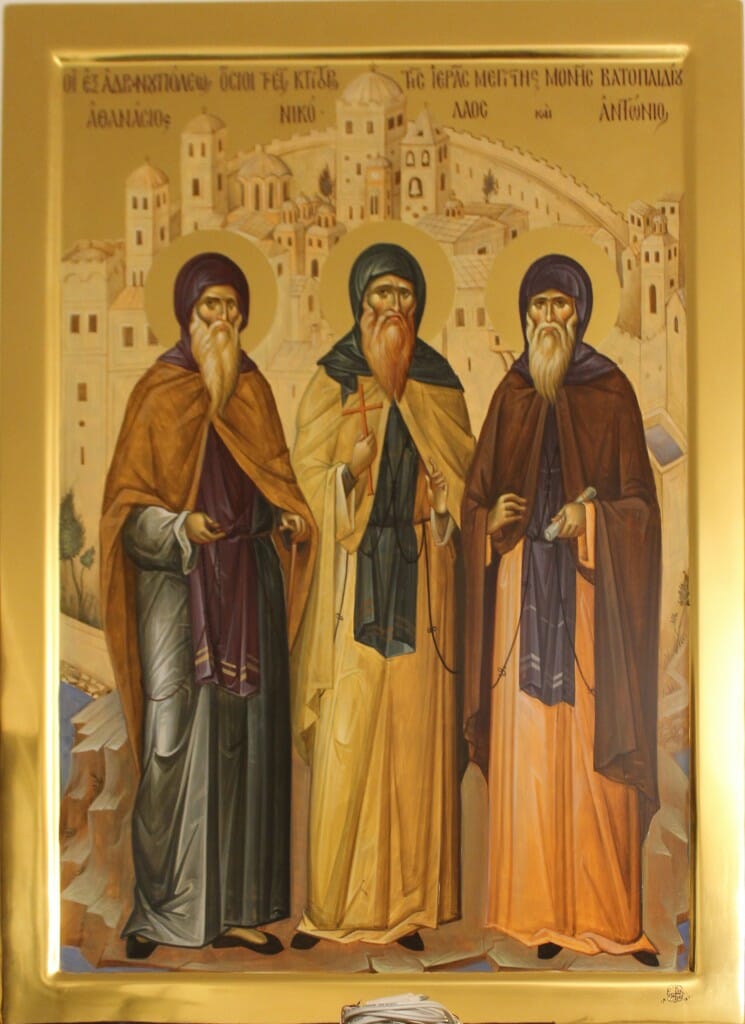
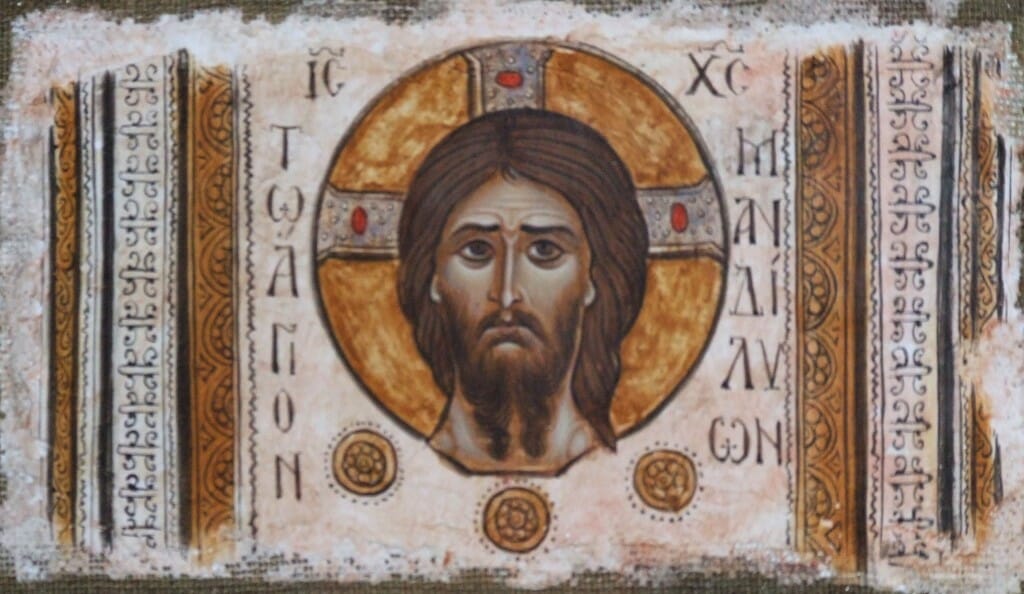
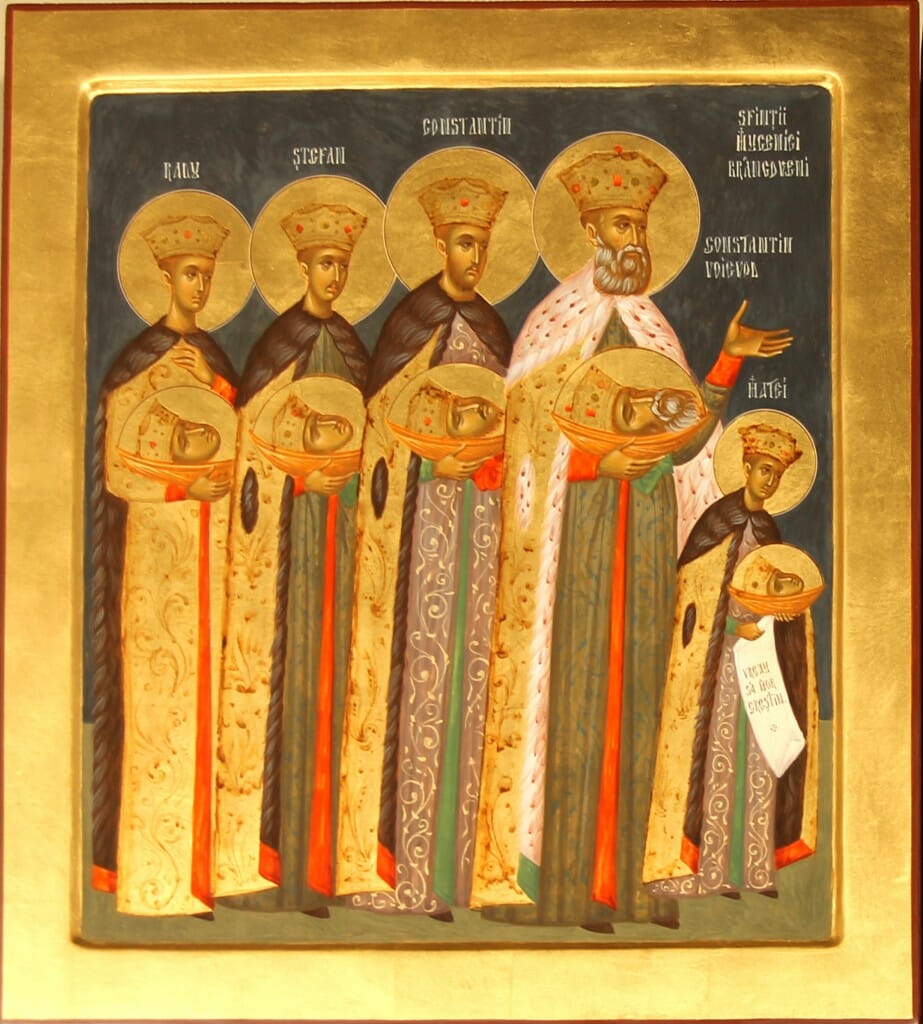
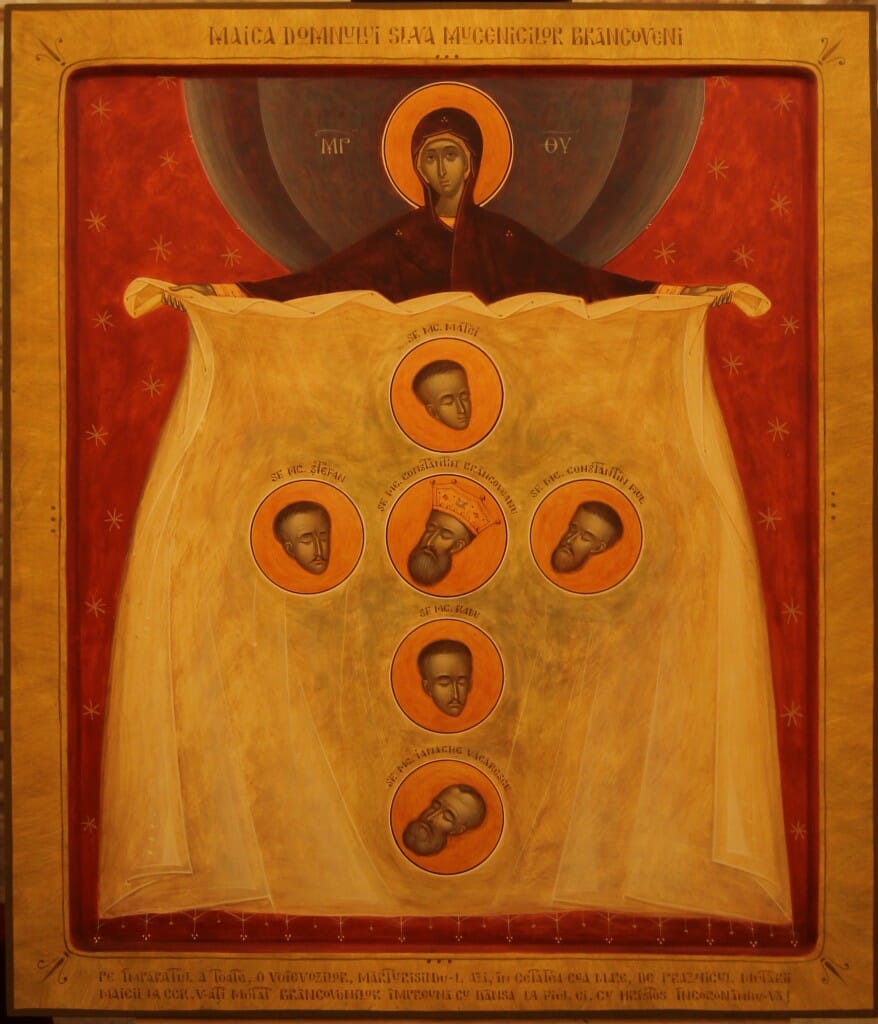
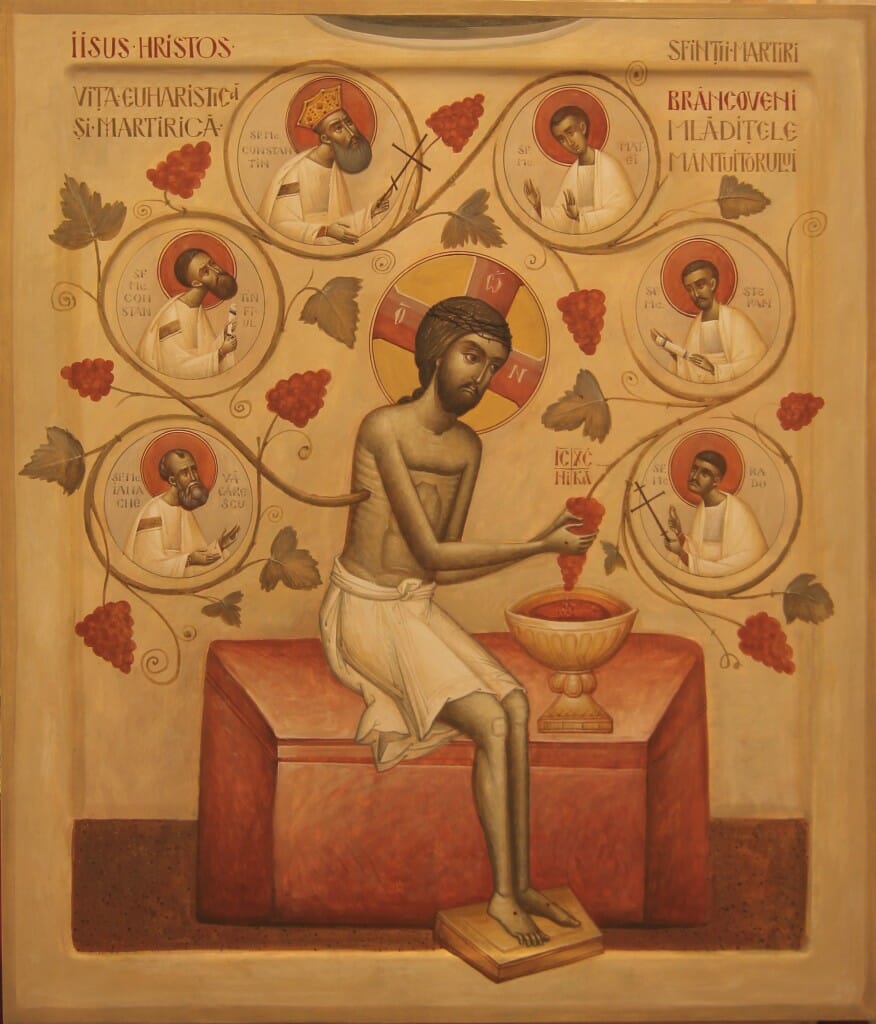
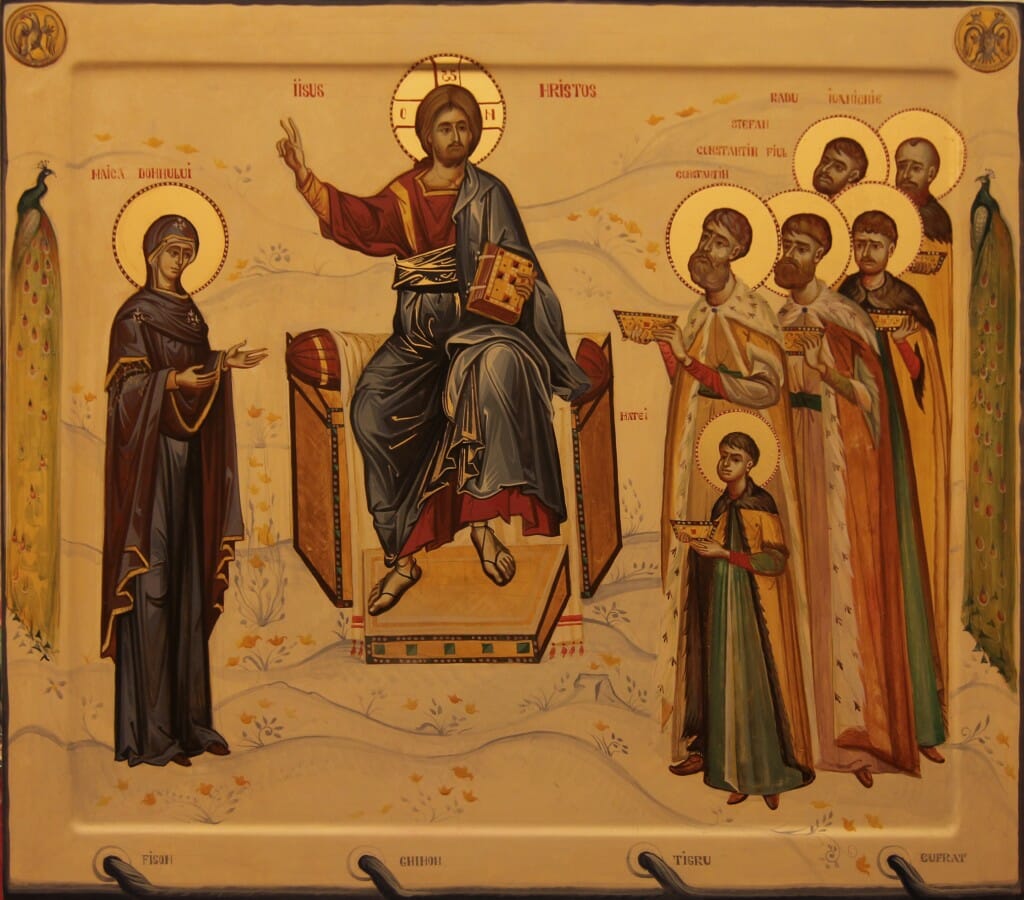
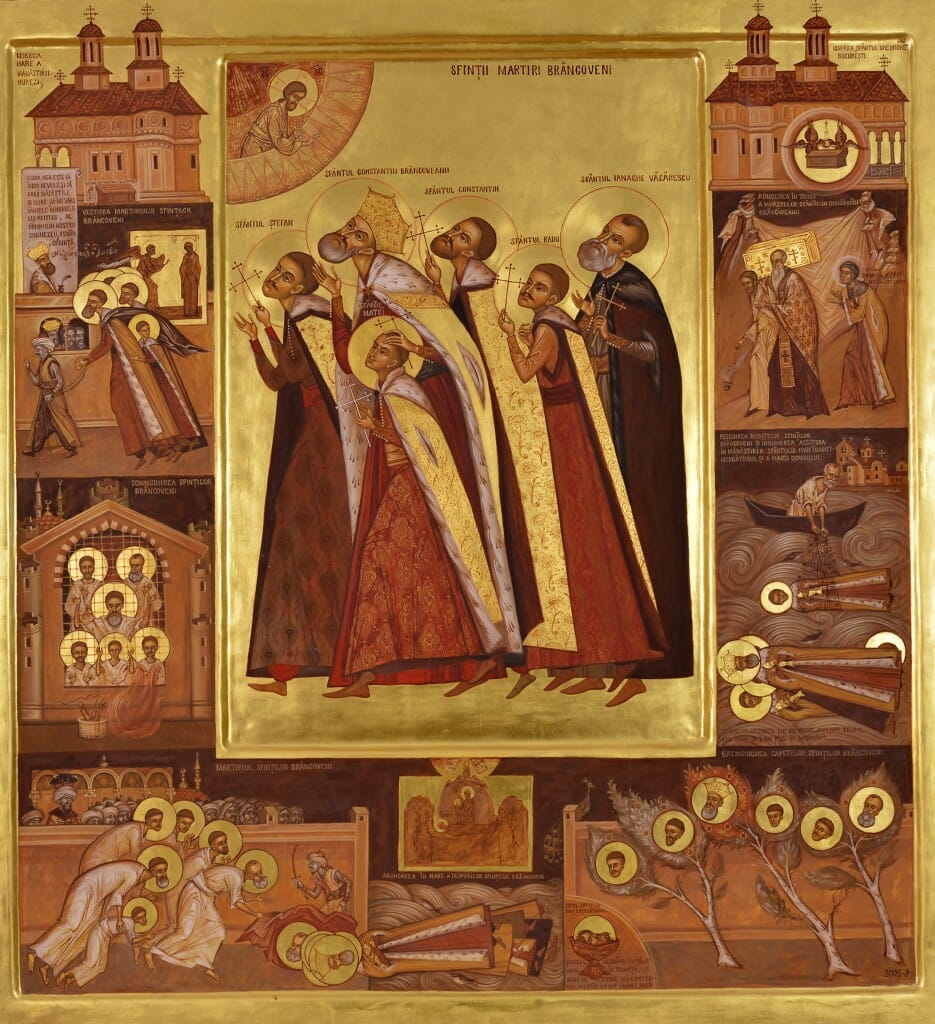
Thank you for this wonderful article. I am overjoyed at seeing the fine work that is being done in Romania. I confess that I will be taking time to study and ponder the technique and style the God Blessed Iconographers are gifting to us in their work. Blessings to OAJ, the editorial people and those engaged in the crafts which bring Glory to God.
These are really glorious. Thank you for presenting them.
Thank you for the beautiful article. IT is wonderful and helpful to see what other Iconographers are doing in the world. With your permission, I would include the link to this article in my next Icon/Art blog:
http://www.americanassociationoficonographers.com .
Kind Regards,
Christine